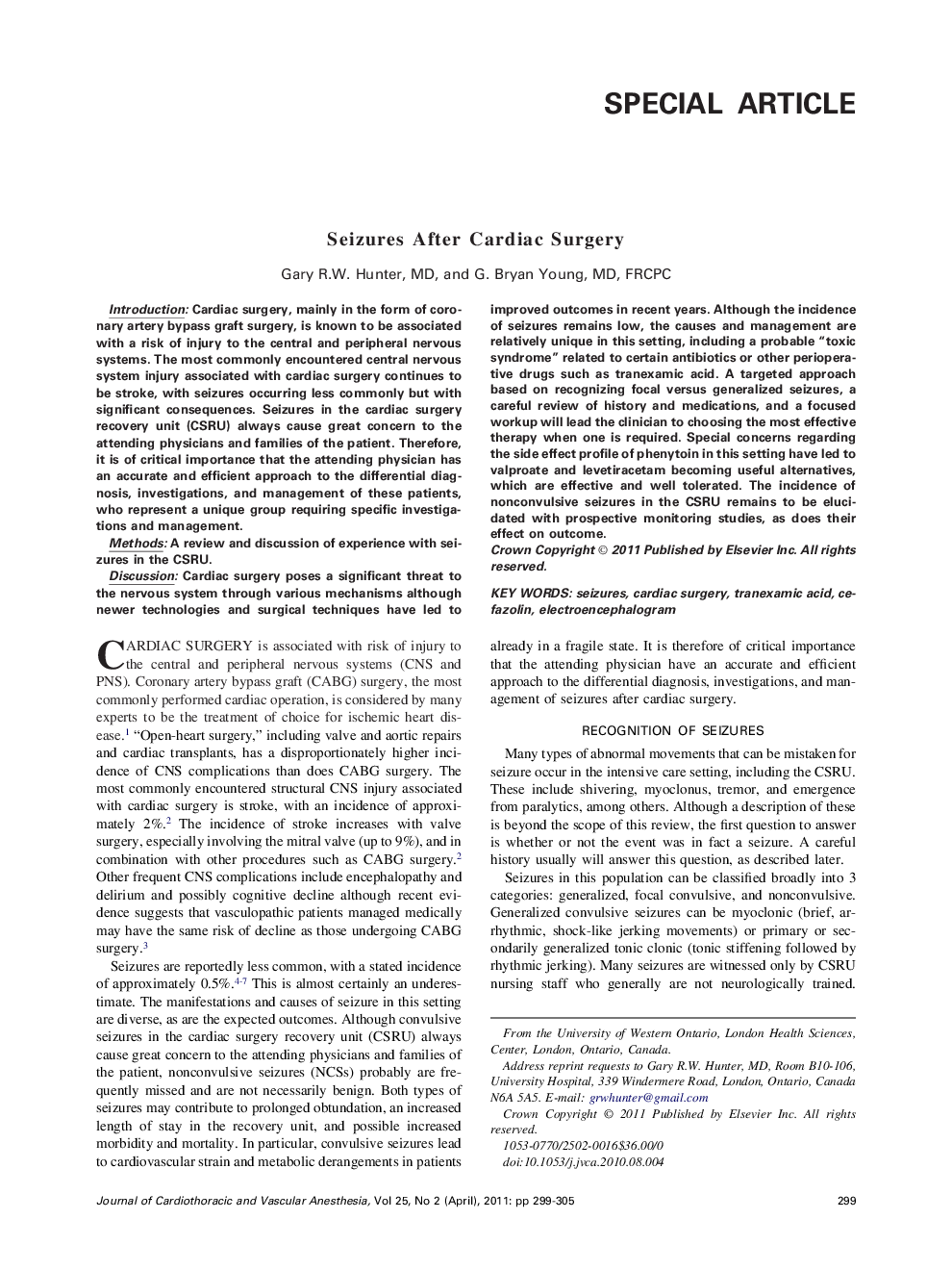| Article ID | Journal | Published Year | Pages | File Type |
|---|---|---|---|---|
| 2761426 | Journal of Cardiothoracic and Vascular Anesthesia | 2011 | 7 Pages |
IntroductionCardiac surgery, mainly in the form of coronary artery bypass graft surgery, is known to be associated with a risk of injury to the central and peripheral nervous systems. The most commonly encountered central nervous system injury associated with cardiac surgery continues to be stroke, with seizures occurring less commonly but with significant consequences. Seizures in the cardiac surgery recovery unit (CSRU) always cause great concern to the attending physicians and families of the patient. Therefore, it is of critical importance that the attending physician has an accurate and efficient approach to the differential diagnosis, investigations, and management of these patients, who represent a unique group requiring specific investigations and management.MethodsA review and discussion of experience with seizures in the CSRU.DiscussionCardiac surgery poses a significant threat to the nervous system through various mechanisms although newer technologies and surgical techniques have led to improved outcomes in recent years. Although the incidence of seizures remains low, the causes and management are relatively unique in this setting, including a probable “toxic syndrome” related to certain antibiotics or other perioperative drugs such as tranexamic acid. A targeted approach based on recognizing focal versus generalized seizures, a careful review of history and medications, and a focused workup will lead the clinician to choosing the most effective therapy when one is required. Special concerns regarding the side effect profile of phenytoin in this setting have led to valproate and levetiracetam becoming useful alternatives, which are effective and well tolerated. The incidence of nonconvulsive seizures in the CSRU remains to be elucidated with prospective monitoring studies, as does their effect on outcome.
